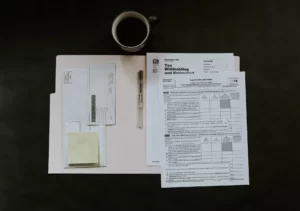Financial stability is one of the most coveted outcomes at a time of unrelenting advancement and change. However, there is one specific phenomenon that can undermine this highly valued sense of security: lifestyle inflation. It is typical for expenses to increase at the same rate as income. While an improvement in lifestyle is frequently a predictable side effect of success, it can also pose serious problems for short and long term wealth.
In order to provide a better understanding of lifestyle inflation, this article presents a case study to illustrate its sources, effects, and management techniques.
In a Nutshell
- Lifestyle inflation is the rise in spending as income rises, which frequently makes it more difficult to save, invest, or pay off debt.
- The transition from being a student to being a full-time worker, job promotions, or significant pay increases frequently cause lifestyle inflation.
- Lifestyle inflation frequently manifests as a greater emphasis on material items, which might give the impression that happiness depends on having them.
- Spending wisely, putting financial independence first, and valuing experiences above all else entails escaping the lifestyle inflation trap.
- Manage and prevent lifestyle inflation by using financial tools like automatic savings strategies and budget variation analysis.
Understanding Lifestyle Inflation
A typical case of lifestyle inflation is the transition from student to full time employee. Despite surviving on very little money as a student, once the first paycheck arrives, things that were once “luxuries” can easily become “necessities,” resulting in increased spending.
Sharing a two bedroom apartment with three other roommates to keep housing and utility costs down suddenly seems less attractive. A person experiencing lifestyle inflation may rent a one bedroom apartment to live alone.
Money is only a tool. It will take you wherever you wish, but it will not replace you as the drive.
Ayn Rand
An Example of Lifestyle Inflation
After graduating from college, Gal found a job at a bank in New York. In college, Gal worked as a waitress and library assistant to make ends meet. She shared a three bedroom off campus apartment with two other students. She subsisted on sandwiches and ramen while juggling college and work.
When she got a job, Gal moved into a studio in New York. She adopted a pet and joined a fitness club. Among her extravagances was eating at every Michelin starred restaurant in New York.
Although Gal was experiencing lifestyle inflation, she was also wise enough to set aside a portion of her income in a savings account. She also invested in a Roth IRA to keep lifestyle inflation from controlling the state of her finances.
Strategies to Avoid Lifestyle Inflation
Lifestyle inflation leaves many people living pay as you go, paying the minimum on their credit cards and lacking cash resources to fall back on when an unforeseen setback arises, such as a medical bill or job loss.
People tend to increase their spending when their income increases because they believe that the additional goods and services they can now buy will make them happier. Often those purchases do not actually make them happier. A better option would be to work toward financial independence by saving more.
It is possible to avoid lifestyle inflation by consciously setting spending and savings amounts. Establishing an automated savings plan can be a good way to ensure that savings goals are met and spending is limited. Avoiding lifestyle inflation can mean achieving financial independence at a younger age, having the financial flexibility to choose a dream job over a higher paying option, and retiring early. See below for more strategies.
Calculate Actual Budget Variances
After taxes and expenses, the net effect of an increase is often less significant than it appears. Take the time to calculate the real change in your budget and determine how the extra money will affect you.
Value Experiences More Than Things
If you start earning more money, instead of buying a new car, house, or expensive wardrobe, consider investing in experiences. Going on a vacation or taking an educational class can create memories that give you lasting satisfaction.
Make Gradual Changes
An expensive car may require a more expensive mechanic, and a large house requires more maintenance. Don’t make big changes in your lifestyle in the first few weeks; rather, celebrate modestly.
Wrap Up
While initially attractive, lifestyle inflation can result in a never ending cycle of living paycheck to paycheck and restrict financial independence. People can progress toward financial independence and break free from the cycle of lifestyle inflation by putting more emphasis on experiences than material gains, changing their lifestyle gradually, and tracking genuine budget slippages.
FAQs

When costs rise at the same rate as income, this is known as lifestyle inflation. It frequently hinders debt relief, saving, and investing.
The typical cause of lifestyle inflation is an increase in income, which can occur as a result of things like job promotions, sizable pay raises, or switching from being a student to working full time.
Although lifestyle inflation might be a common side effect of success, it can also make it more difficult to save money for the future, invest, or pay off debt. The pattern of living paycheck to paycheck is frequently the result, which prevents financial freedom.
Prioritizing financial independence and experiences over material items, adopting tools like automated savings plans, and keeping an eye on actual budget variations are all ways to prevent lifestyle inflation. Individuals can achieve financial independence and properly manage their finances by following these steps.
Article Sources
At Capital Maniacs, we are committed to providing accurate and reliable information on a wide range of financial topics. In order to achieve this, we rely on the use of primary sources and corroborated secondary sources to support the content of our articles.
Primary sources, such as financial statements and government reports, provide firsthand evidence of financial events and trends. By using primary sources, we are able to directly reference information provided by the organizations and individuals involved in these events.
Secondary sources, such as financial analysis and commentary, interpret and analyze primary sources. While these sources can be useful for providing context and background information, it is important to use corroborated sources in order to ensure the accuracy and reliability of the information we present.
We take pride in properly citing all of our sources, both primary and secondary, in order to give credit to the original authors and to allow our readers to verify the information for themselves. We appreciate your trust in our website and are committed to upholding the highest standards of financial journalism.






















